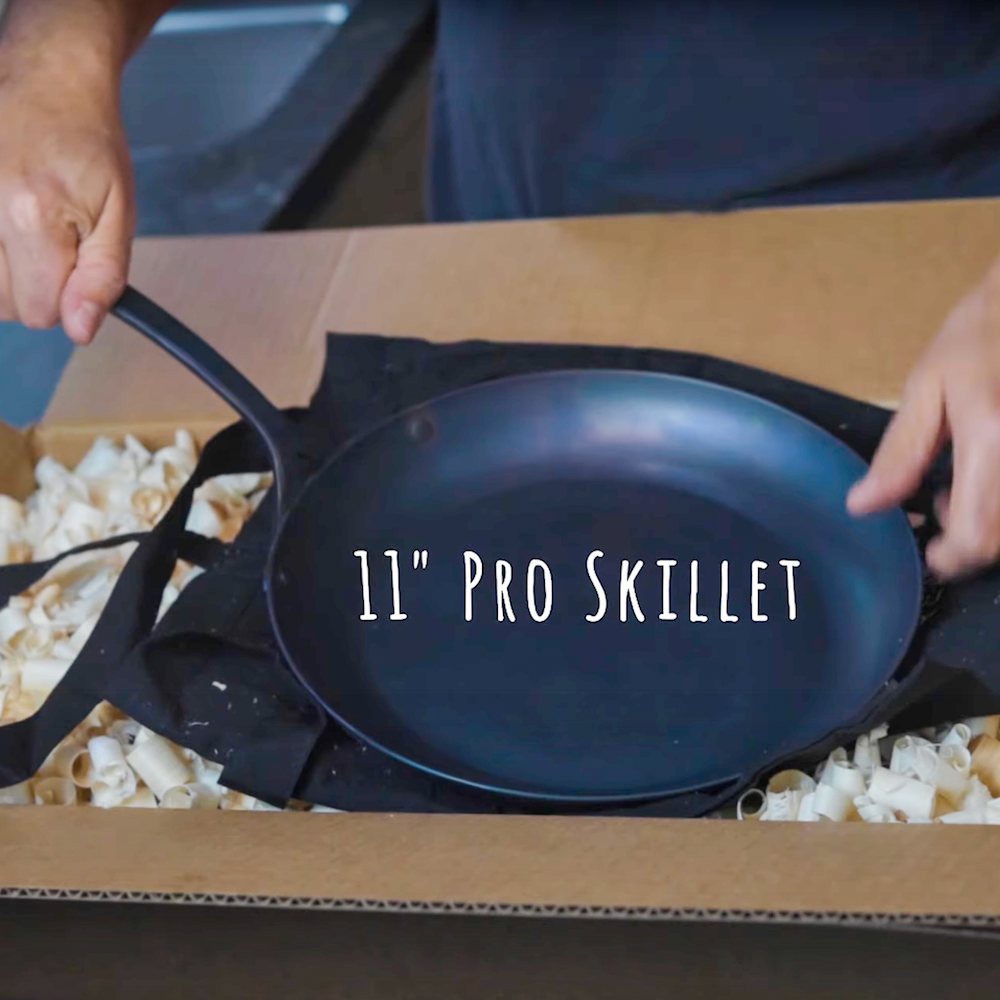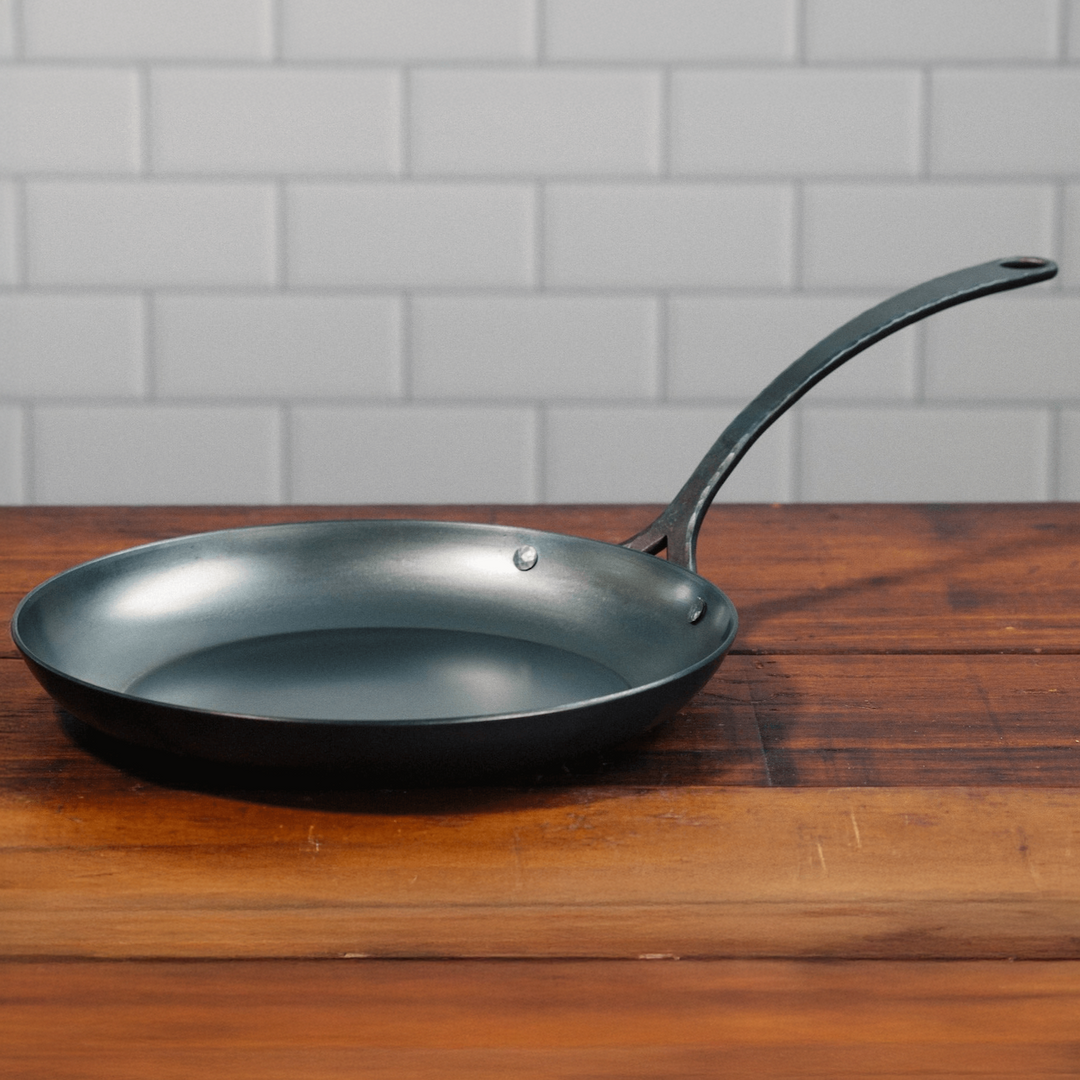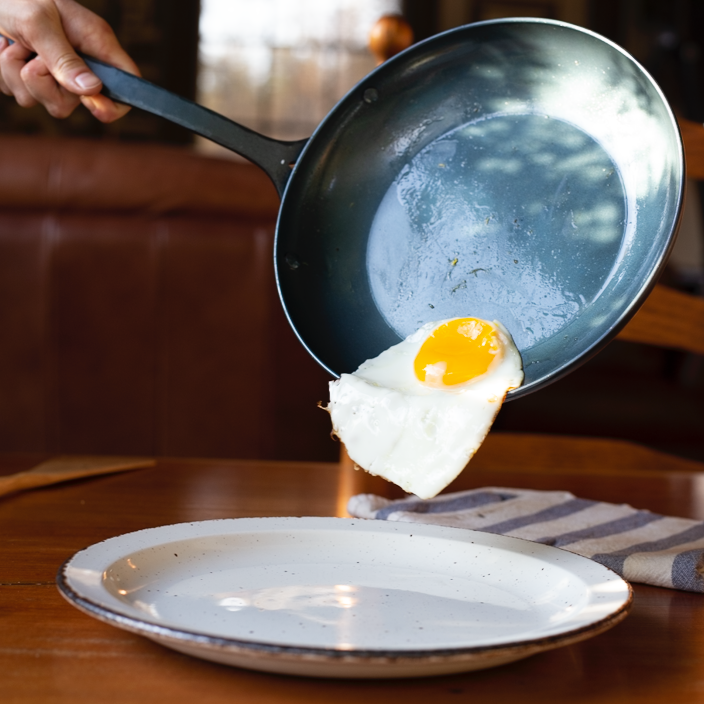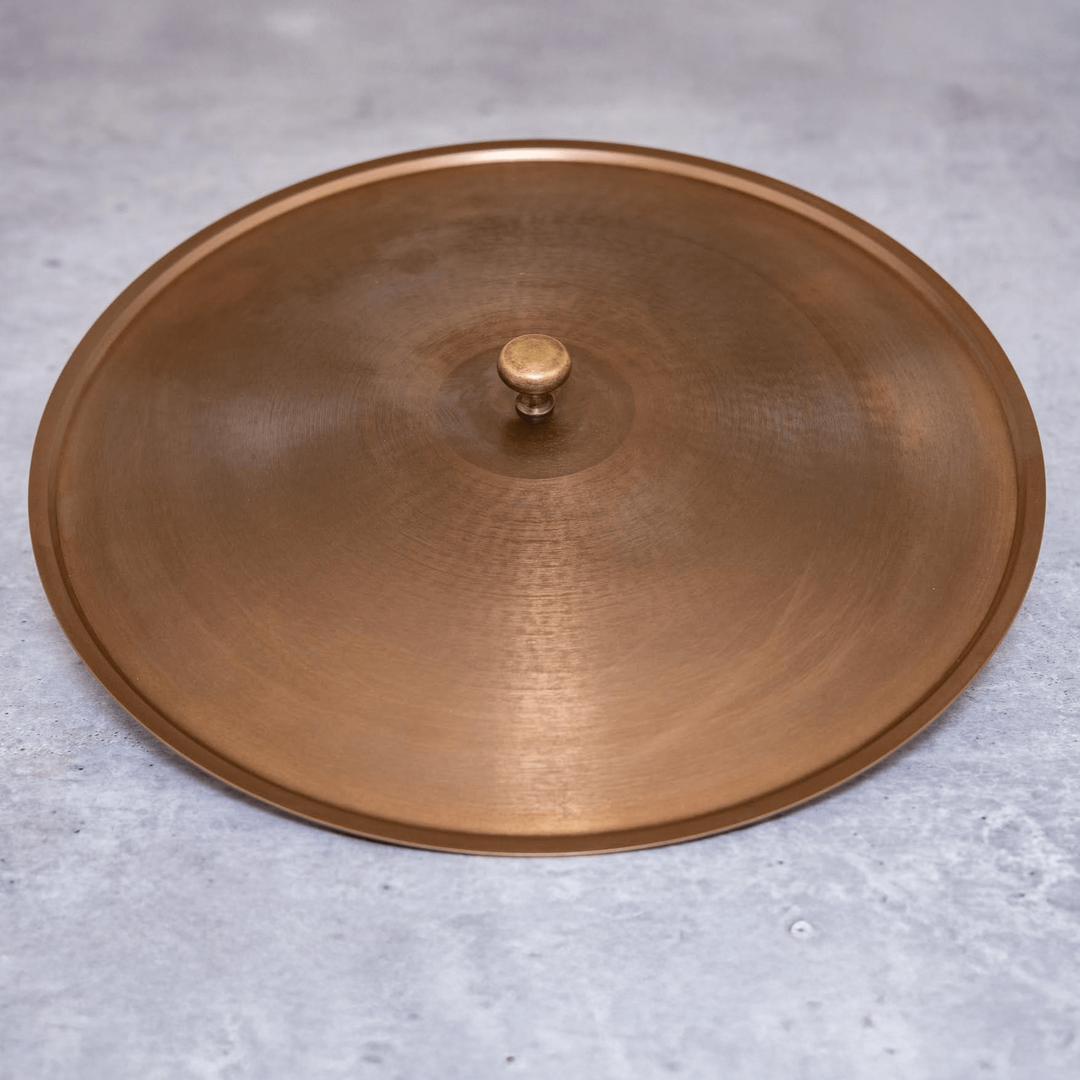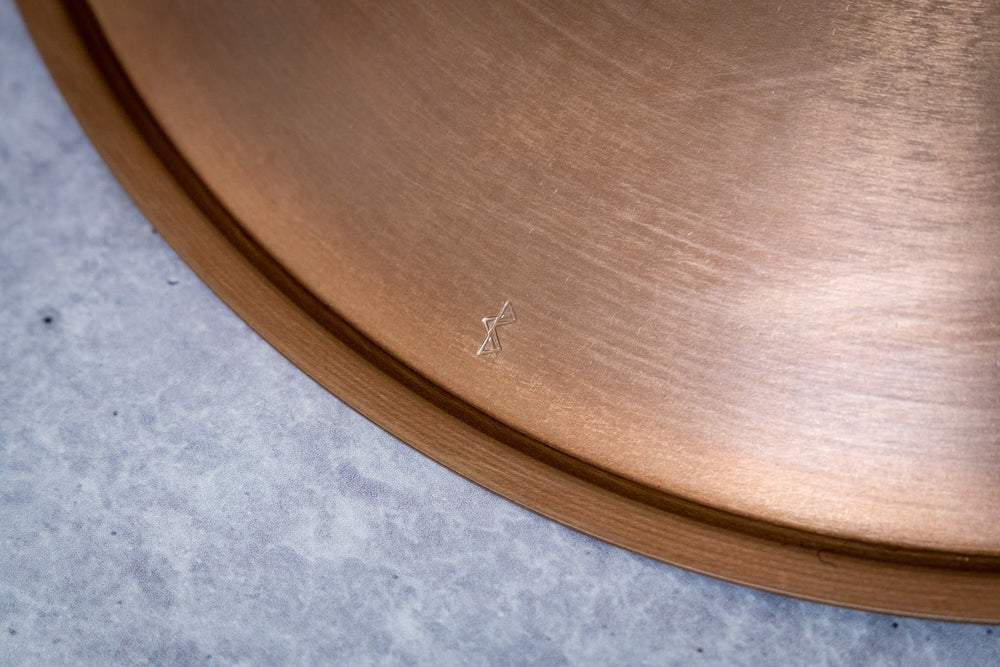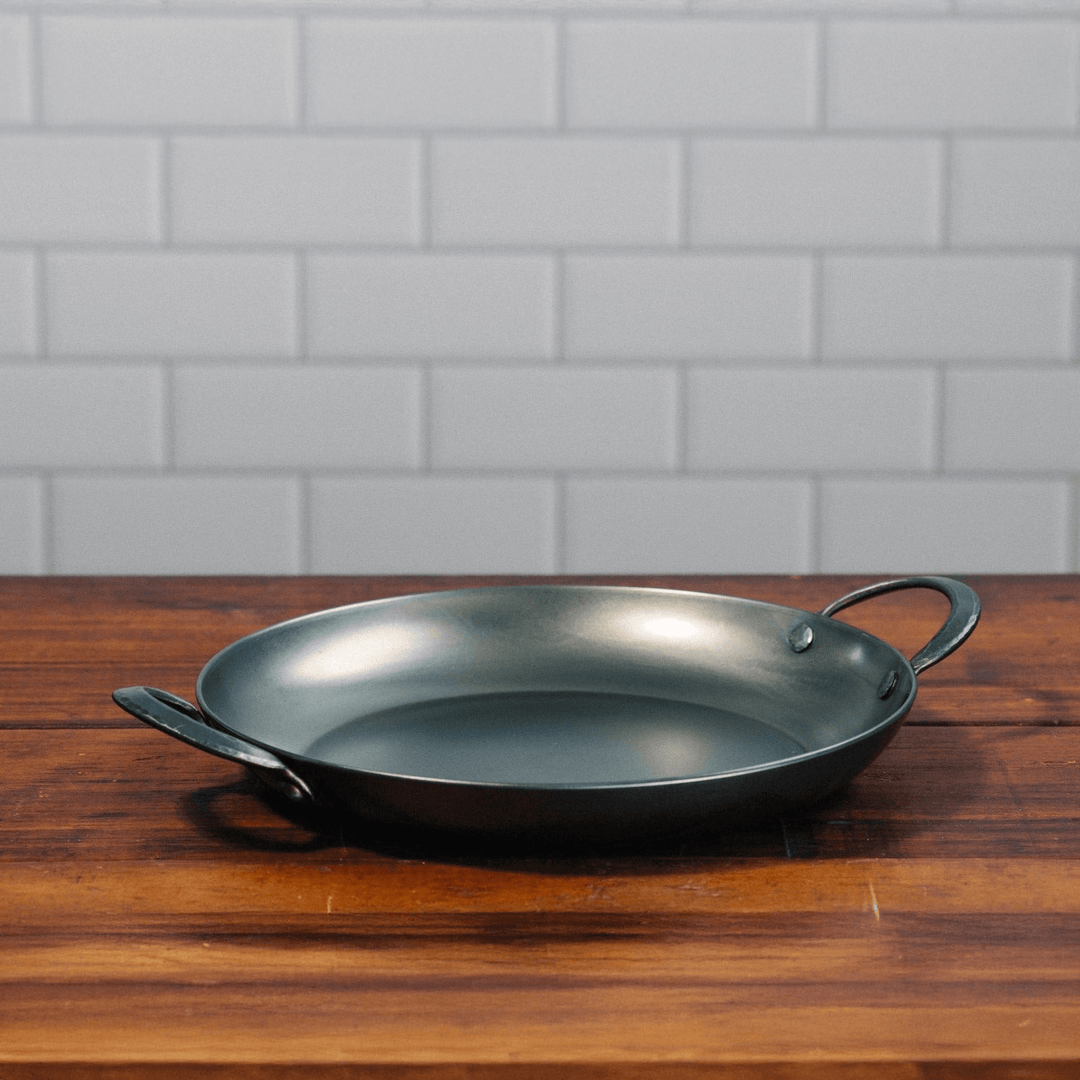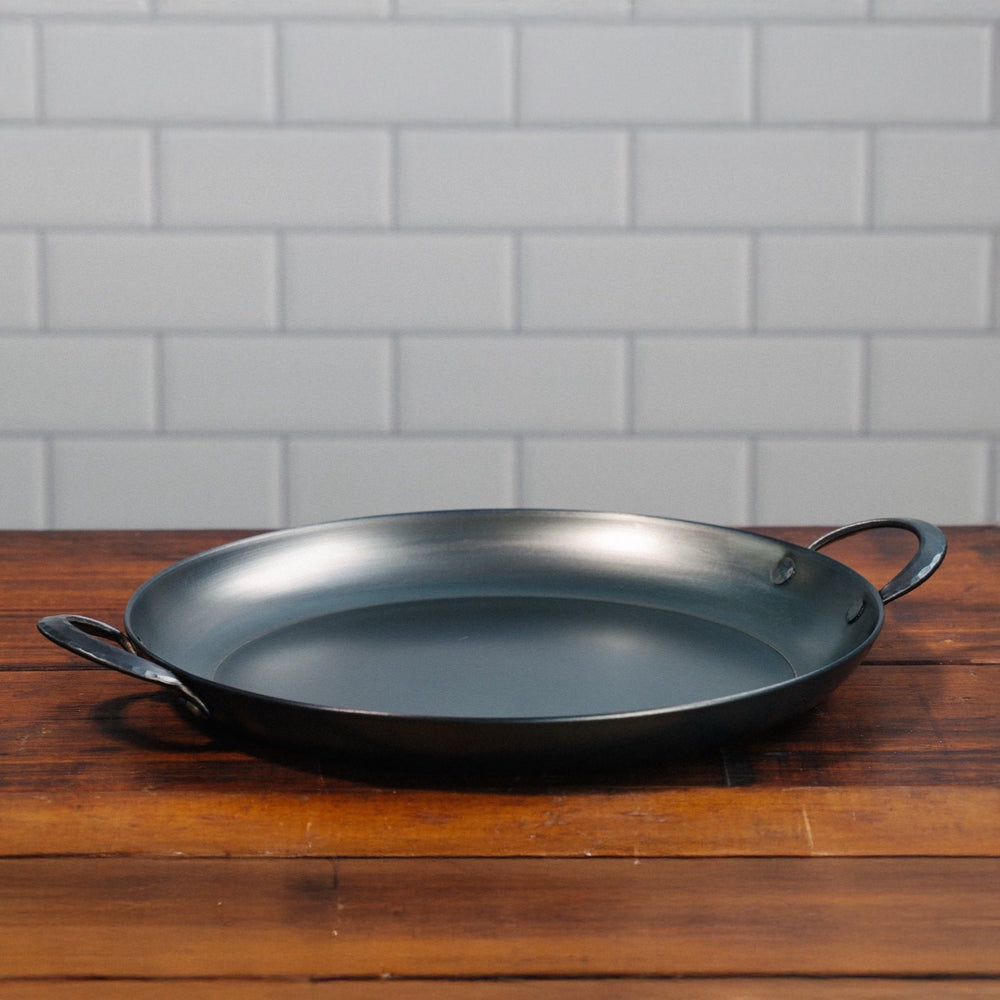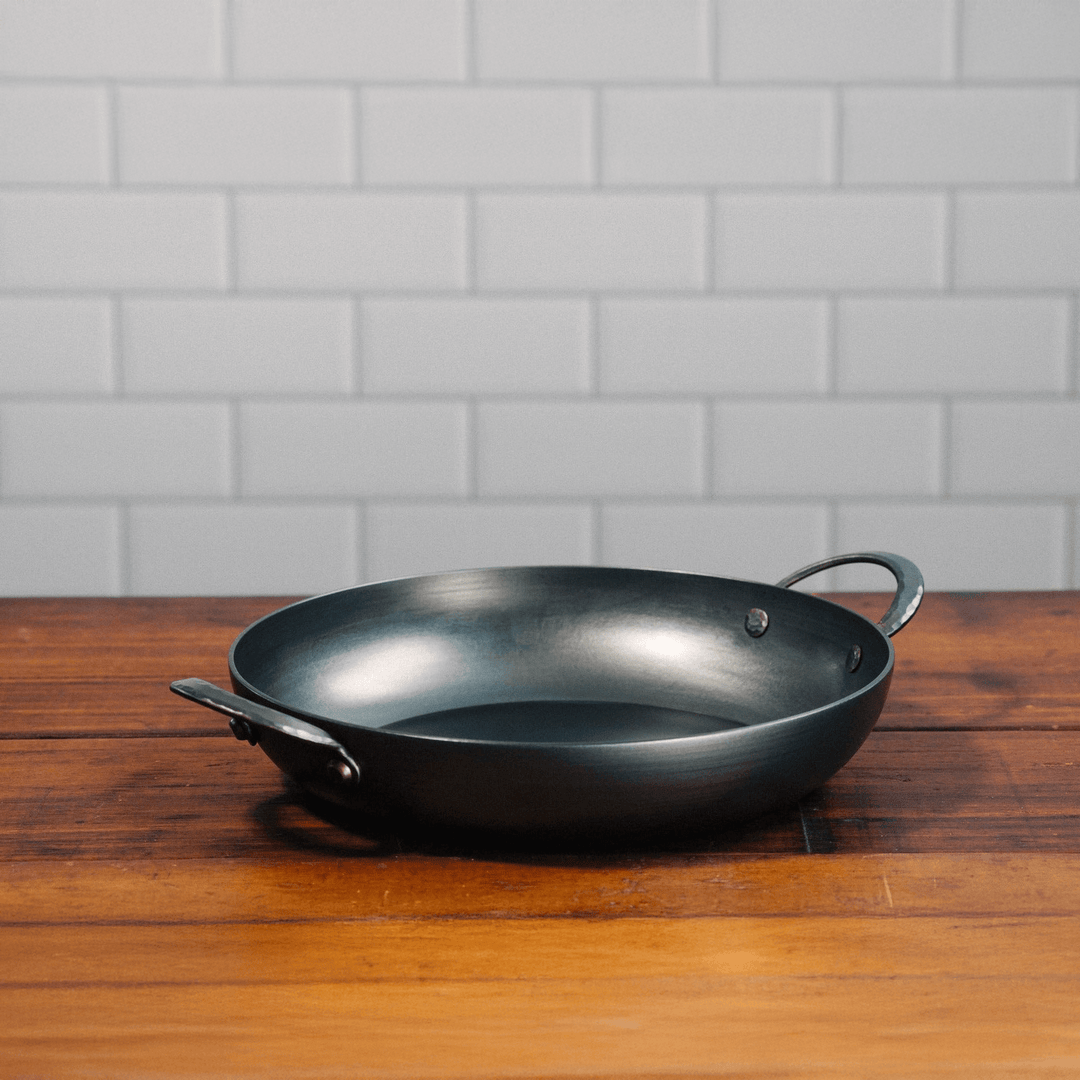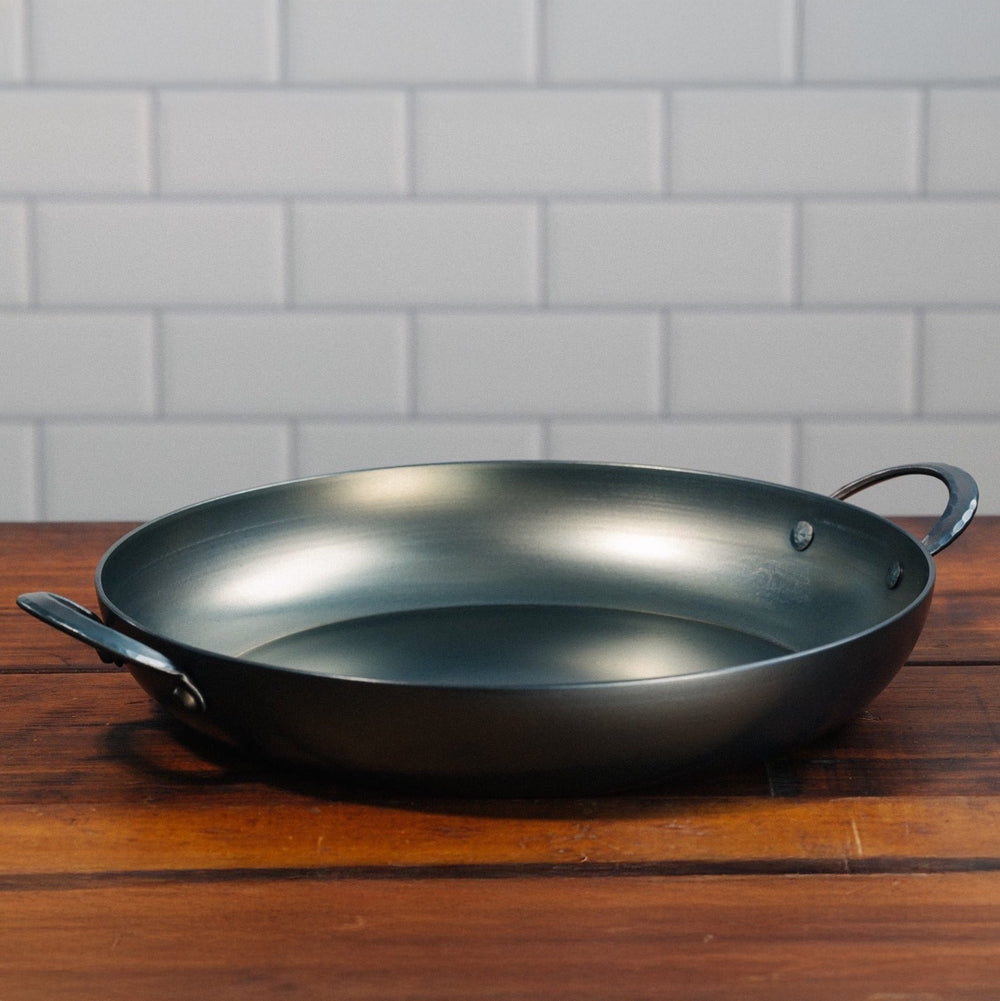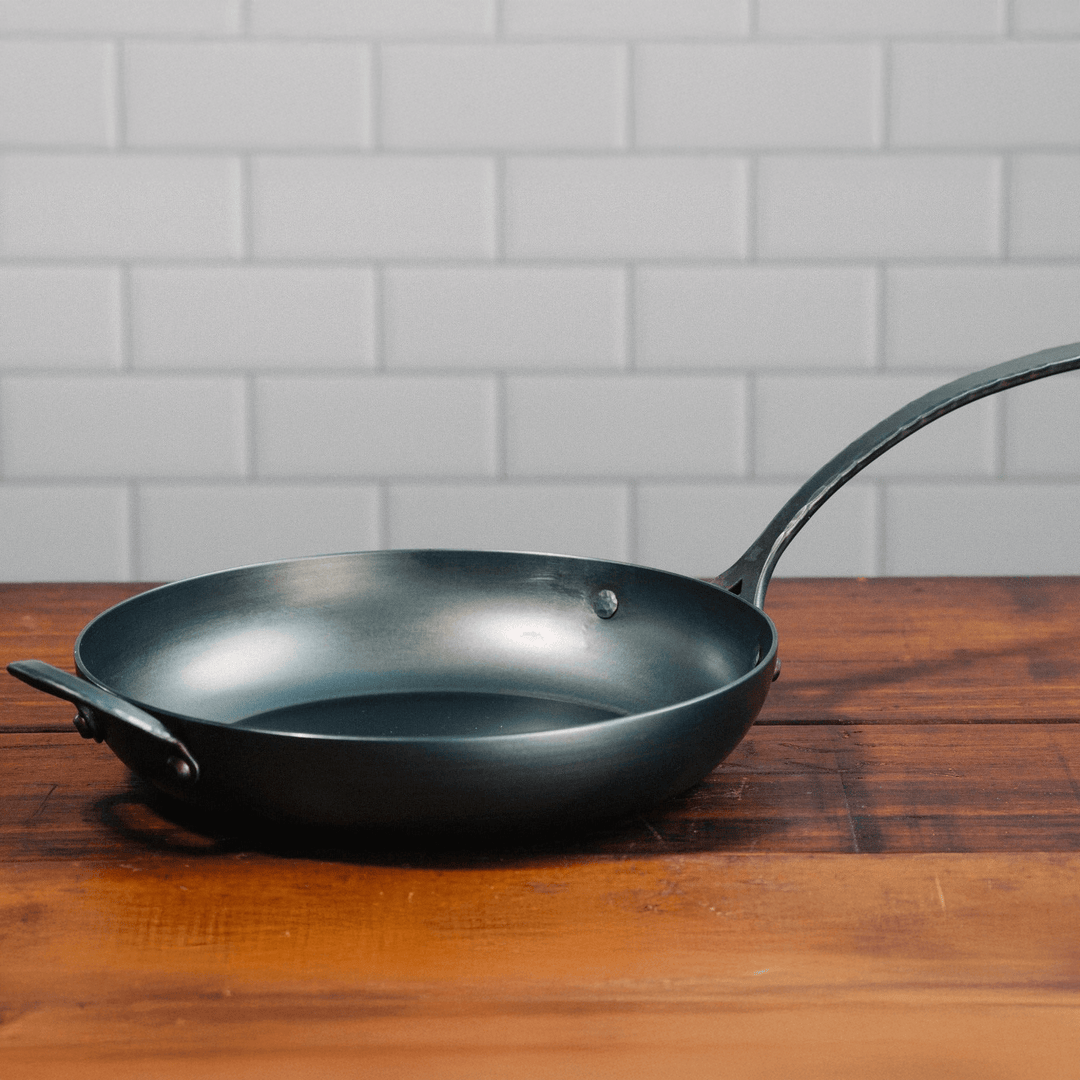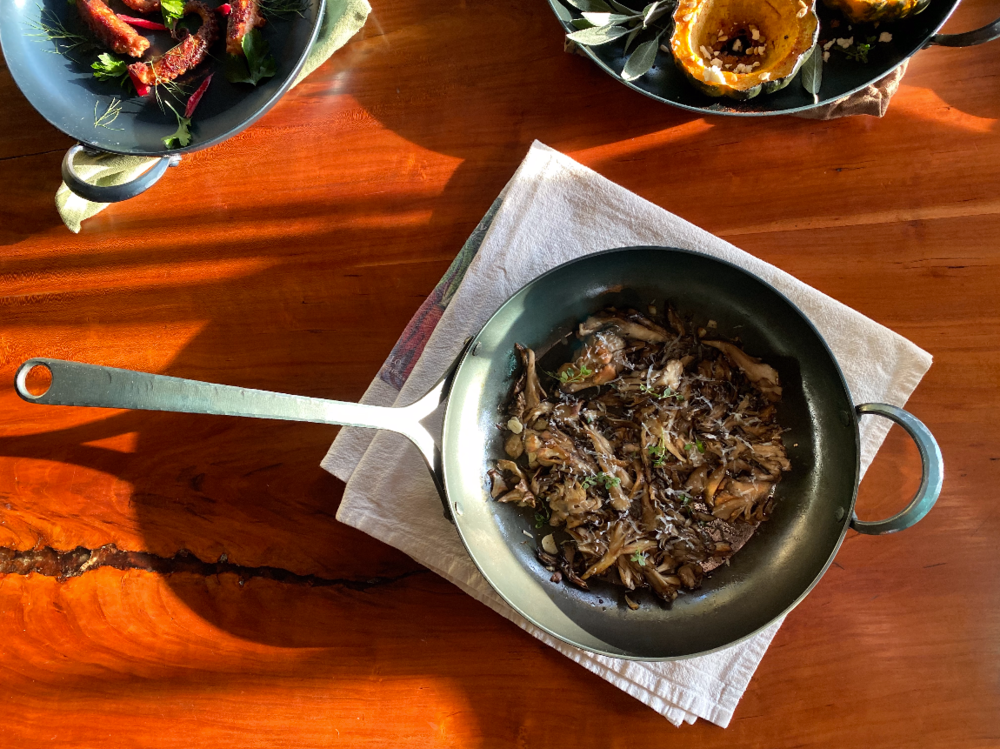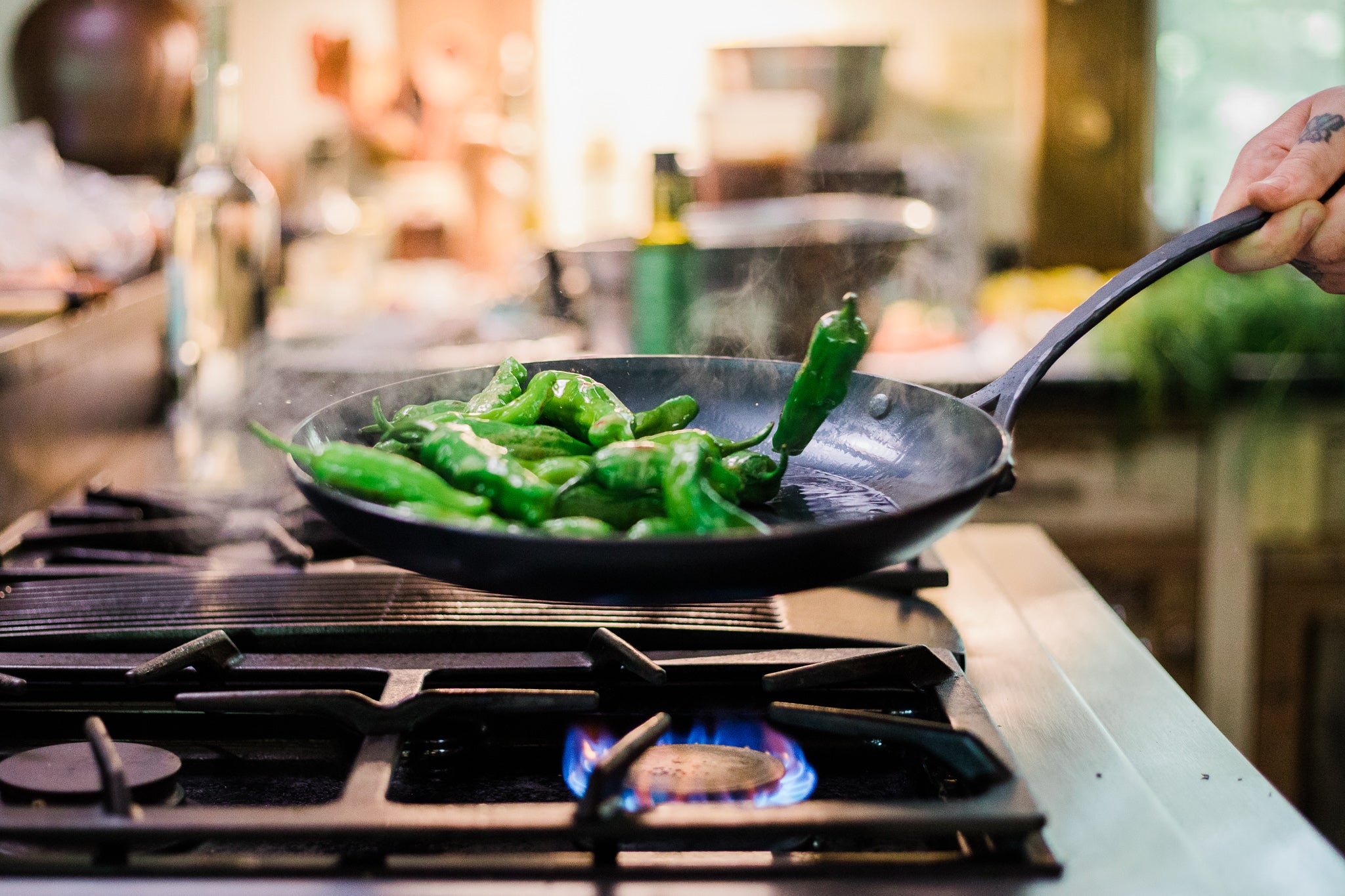
Seasoning
Get the most out of your carbon steel cookware
Step 1: Clean & dry your pan
Your carbon steel cookware will arrive tempered (which gives it the blue finish), and lightly coated with coconut oil to prevent oxidation during storage and shipping. We encourage you to season your cookware prior to use by washing off the coconut oil, drying the piece thoroughly, and then proceeding with your seasoning method and oil of choice.
Step 2: Apply oil & heat pan
Use a high-smoke-point oil like avocado oil to apply a thin layer over the entire surface of the pan, including the sides and handle.
After cleaning and thoroughly drying your pan, warm it under a low flame, then apply about a teaspoon of oil then wipe the oil over the surface of the pan with a paper towel. Reserve the oiled paper towel as it should be enough oil for additional applications during the seasoning process. If the towel is burnt, find a fresh oil-soaked side or use a new sheet with a dab of oil.
We like to use the stovetop smoke seasoning method as demonstrated in our video. It is a relatively quick process in which very thin layers of oil are bonding onto (or polymerizing with) the steel. This process generates a fair amount of smoke so be sure your space is well ventilated.
Step 3: Continue to heat and cool the pan
Modulate your heat or move your piece on and off the heat source as soon as the oil starts to smoke. Keep in mind that “less is more” and that applying too much oil at a time will result in a sticky and splotchy surface. The goal is to achieve a smooth surface that gradually transitions from the original blue to a rich black color.
Step 4: Repeat steps 2 & 3
Apply another layer of oil each time, until the pan has developed a dark, smooth surface.
Step 5: Use and maintain
Your pan is now ready to use! To maintain the seasoning, avoid using soap when cleaning the pan, and instead, rinse it with hot water and scrub gently with a soft sponge. Dry the pan thoroughly after each use and apply a thin layer of oil to the surface before storing it.
Successful smoke seasoning balances temperature and time alongside a conservative application of oil. The temperature is determined by the smoke point of your oil and the time can be measured by how long it takes for the color to transition from the original blue to glossy black.
This smoke seasoning method works best for our Skillets and 11” Sauciers on a gas stove. Results may differ on glass top, electric, or induction stoves. For larger pieces such as our 13” Saucier, our Rondeau, or our Bake Steels, the oven method may yield better results.
For the oven method, preheat your oven to its highest cooking temperature (not the self-cleaning mode). Prepare your piece by washing the coconut oil off and then drying thoroughly. Next, apply a thin film of oil onto the cooking surface (or over the entirety of the piece if desired). Any excess oil should be wiped off so the surface appears dry. Place the piece in the preheated oven for 1 hour then turn off the heat and let the oven cool for at least an hour without opening the door. This process can be repeated until you achieve the desired level of seasoning. Oftentimes just a couple of cycles will suffice.
Prolonged exposure to acidic ingredients can wear away the seasoning on your cookware but you can simply re-season your piece by either aforementioned method to restore the protective layer.
Troubleshooting some potential smoke seasoning issues:
Issue: If your surface is sticky or gummy you’ve likely applied too much oil. (Applies to oven method as well)
Solution: You can scour the sticky oil off with a Scotch-Brite pad or steel wool until the metal surface is smooth to the touch then try seasoning again. The color does not need to be uniform to begin re-seasoning as it will all blend into black.
Issue: If your surface is not changing colors, the reason is likely that you’re not giving it enough time for the oil to smoke and polymerize.
Solution: Make sure the oil reaches its smoke point, then regulate the heat by turning the dial down or moving the pan around. Maintain that temperature until the pan begins to transition from the original blue to the desired glossy black.
Issue: If during the smoking process the surface starts to look dry and ashy, it is likely too hot.
Solution: Lower your heat and move the pan away from the heat source to let heat dissipate then carefully wipe another thin layer of oil from the reserved paper towel to resume seasoning.


